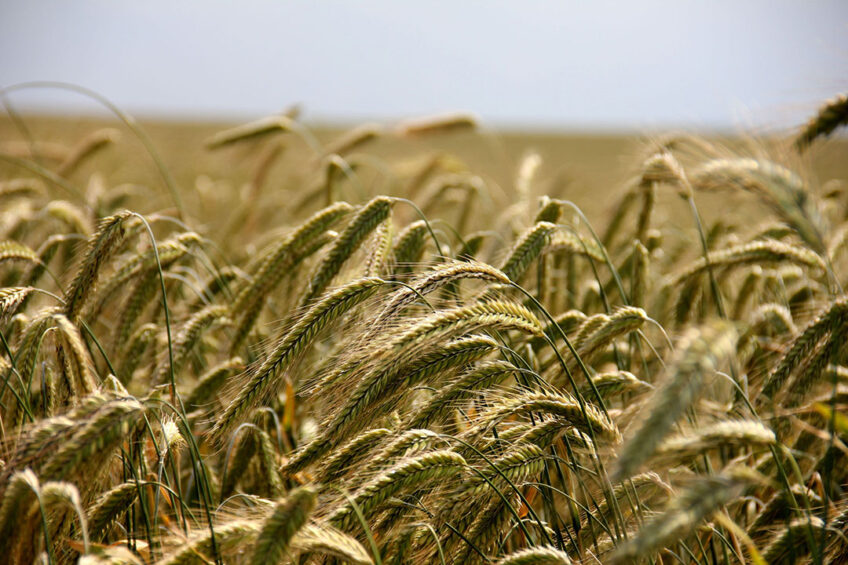Hybrid rye as a replacement for corn in swine diet

Hybrid rye comprises of less than 1% of worldwide cereal grain production with a high-quality nutritional composition suitable for swine diet.
In recent years, a variety of hybrid rye has been developed in Germany with decreased proneness of ergot contamination, enhanced grain yield, and improved overall plant hardiness which elicits different feeding behaviours, carcass characteristics, and growth performance in pigs.
Hybrid rye contains large amounts of highly digestible starch to provide required energy and it encompasses similar amounts of standardised ileal digestible amino acids and greater standardised total tract digestible phosphorus compared with corn. Furthermore, hybrid rye includes more fermentable dietary fibre than wheat, corn, and sorghum providing health benefits to pigs. Thus, there is a possibility to replace corn as the dominant cereal grain fed to pigs with hybrid rye.
What is hybrid rye?
Hybrid rye is a crop developed by breeding 2 genetically different lines of rye to create a superior hybrid with 20% greater yield, more genetically uniform seeds, and more uniform fields with synchronised flowering and pollination windows compared with conventional varieties of rye. In Germany over 80% of grown rye is from hybrid varieties but hybrid rye has only been available in Canada and the United States since 2014 and 2016, respectively. Although, the potential market for hybrid rye in North America is expected to increase. Hybrid rye contains 87-90% dry matter, 3,850 kcal/kg of gross energy, 12-18% total dietary fibre of which 1 to 4% is soluble dietary fibre, less than 2% acid-hydrolysed ether extract concentration, 8-13% crude protein, 0.35% Lysin, 0.15% Methionine, 0.30% Threonine, 0.10% Tryptophan, 0.30% phosphorous, and 0.05% calcium.
Energy and nutrient digestibility of hybrid rye
In hybrid rye, the standardised ileal digestibility of crude protein is approximately 75%, and the standardised ileal digestibility of Lysin is approximately 65%. The standardised total tract digestibility of phosphorus is greater in hybrid rye than in corn when microbial phytase is not included in the diet. The apparent ileal digestibility of starch in hybrid rye is greater than 90%. The total dietary fibre in hybrid rye is highly fermentable with the apparent total tract digestibility of approximately 70%.
Impact of hybrid rye on growth performance
Hybrid rye contains fewer antinutritional factors and lower risk of ergot contamination due to genetic improvements and proper management of the grain pre- and post-harvest compared with conventional varieties of rye. Growing and finishing pigs fed hybrid rye have greater average daily gain and average daily feed intake. However, high concentration of hybrid rye decreases average daily gain and average daily feed intake; thus, it is suggested to consider the concentrations of ergot alkaloids in raw ingredients and mixed diets to effectively replace portions of other cereal grains with hybrid rye in swine diets. Up to 75% of corn can be replaced by hybrid rye in gestation diet without negative impacts on sow reproductive performance. Replacing 25% or 50% of corn by hybrid rye in lactation diets improves sow lactation performance including weaning of larger and heavier litters due to reduced pre-weaning mortality.
Impact of hybrid rye on carcass characteristics
Hybrid rye improves growth performance indicators such as final body weight, average daily gain, and average daily feed intake which in turn increase carcass weight, slaughter value, dressing percentage, carcass price, backfat thickness, and loin depth. However, increased inclusion of hybrid rye in swine diet reduces slaughter value, backfat thickness, average daily gain, and lean and enhances adiposity.
Conclusion
Hybrid rye is a suitable alternative to corn in swine diets due to its positive impacts on digestibility of energy and nutrients, growth performance, and carcass characteristics. Replacing corn with hybrid rye in swine diet results in improved growth performance, and favourable carcass characteristic; however, high inclusion rates of hybrid rye cause lower feed intake, reduced slaughter value, backfat thickness, average daily gain, and lean and enhanced adiposity. In addition, further research is required to evaluate the effects of feeding hybrid rye on growth performance of nursery pigs, and sow behaviour in lactation.











